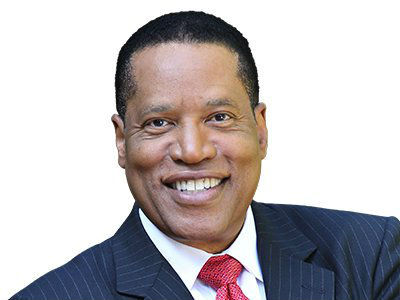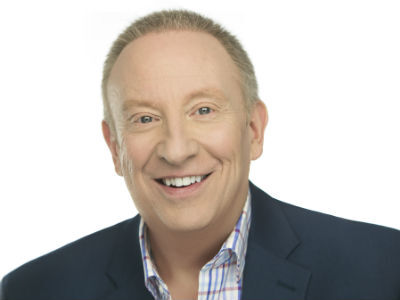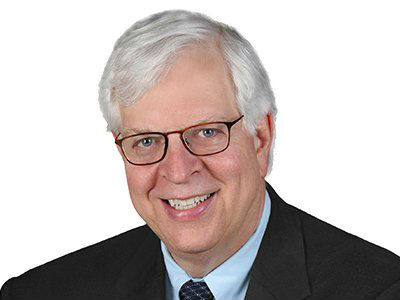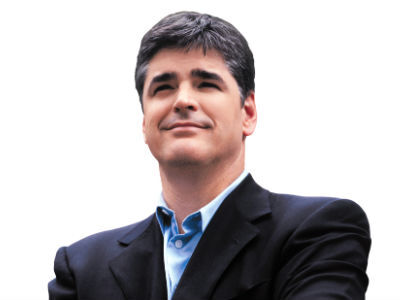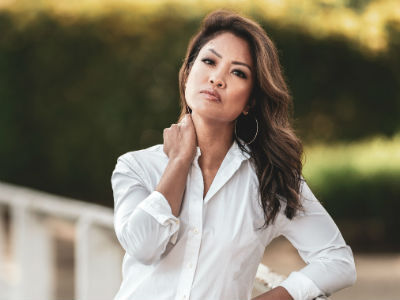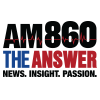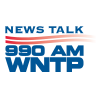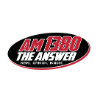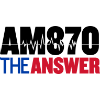A dermatologist reveals 11 shampoo ingredients that could actually damage your hair
Lifestyle

Audio By Carbonatix
2:30 PM on Wednesday, June 25
By Dr. Knox Beasley for Hers, Stacker
A dermatologist reveals 11 shampoo ingredients that could actually damage your hair
Finding the right shampoo, conditioner, and styling products can make all the difference in keeping your hair strong, healthy, and full of life.
At the root (pun intended) of healthy hair are three key factors:
- The strength and hydration of your hair strands.
- The health of your scalp (which houses the follicles that support growth).
- Your overall well-being, since your body supplies the nutrients your hair needs to thrive.
But with so many options on the market, figuring out which ingredients actually support your hair — and what ingredients are bad for hair — can be overwhelming. Hers provides needed insights.
What Ingredients Are Bad for Hair?
Though many hair care ingredients can nourish and protect, some can strip moisture, cause irritation, or even contribute to breakage, shedding, or acne breakouts around the scalp and hairline.
So, what ingredients are bad for hair? It’s different for everyone (and every hair type), but here are several you might want to avoid:
- Sulfates
- Artificial fragrances
- Silicones
- Parabens
- Formaldehyde
- Alcohols
- Bleaches and hair color products
- Coal tar
- Phthalates
- Oils
- Selenium sulfide
Below is a breakdown of the biggest culprits and why they might be worth skipping the next time you shop for hair care products, everyday habits that can impact hair health, and tips for keeping your strands in their best shape.
1. Sulfates
Sulfates are commonly used as foaming agents and cleansers in shampoos, liquid soaps, and detergents. They belong to a group of chemical compounds called surfactants.
When added to shampoo, sulfates can strip away extra sebum (an oily, waxy substance secreted by the sebaceous glands) from the scalp and hair follicles.
Examples of sulfates in hair care products:
- Sodium lauryl sulfate (SLS)
- Sodium laureth sulfate (SLES)
- Ammonium lauryl sulfate
They can remove oil and buildup and create that rich, foamy lather you crave. But sulfates can also strip away too much moisture, leaving hair feeling dry, dull, or prone to tangling — particularly for those with sensitive scalps, curly, textured hair, or conditions like rosacea or eczema.
That said — and contrary to popular belief — sulfates aren’t toxic ingredients or linked to serious health risks, especially not in the small quantities used in hair products.
Still, if you prefer a gentler cleanse or have a sensitive scalp, opting for sulfate-free formulas may be a better choice.
2. Artificial Fragrances
Fragrances in hair care products aren’t necessarily harmful to hair, but they can be a common irritant — particularly for those with sensitive skin. Specifically, some synthetic fragrances contain allergens that may trigger irritation, dryness, or even contact dermatitis in people prone to skin reactions.
Research suggests that fragrances in hair products (particularly those that rinse out, like shampoo) may not have the same risk of irritation as leave-on skincare. But they can still be problematic for those with conditions like rosacea or eczema.
If you’re sensitive to fragrances, opt for products labeled “fragrance-free” rather than “unscented,” as unscented formulas may still contain masking agents that could irritate your scalp.
3. Silicones
Silicones are commonly found in hair products that promise to detangle and deliver silky, smooth strands. Though they can create a sleek, frizz-free finish, they also have a tendency to build up over time, leaving hair looking dull, dry, and weighed down.
Silicones aren’t necessarily bad for your hair, but if you’re noticing issues and want to switch, some types of silicones to avoid include:
- Dimethicone
- Phenyl trimethicone
- Cyclomethicone
- Cyclopentasiloxane
- Cyclohexasiloxane
If you use products with silicones, think about adding a clarifying shampoo to your routine every few washes to prevent buildup and keep your hair feeling fresh.
4. Parabens
Parabens are preservatives commonly used in makeup, skincare, and hair care products to prevent the growth of mold and bacteria. While they help extend shelf life, their potential effects on health (and hair health) are still up for debate.
Parabens found in hair products include:
- Propylparaben
- Methylparaben
- Ethylparaben
- Butylparaben
Research suggests that parabens can be absorbed into the body, with traces found in urine samples. They aren’t considered highly toxic, but some studies on animals indicate parabens may act as endocrine disruptors, potentially interfering with hormone production (specifically estrogen, progesterone, and thyroid hormone). But this hasn’t always been the case in human studies.
If you prefer to play it safe, look for hair products labeled “paraben-free.”
5. Formaldehyde
Formaldehyde is a strong-smelling, colorless gas that can irritate the eyes, nose, and lungs — causing symptoms like coughing, wheezing, and nausea when inhaled. It’s also classified as a carcinogen, meaning prolonged exposure may increase the risk of cancer, according to the National Cancer Institute.
While formaldehyde isn’t typically found in shampoos or conditioners, it’s sometimes used in hair-smoothing treatments designed to straighten hair and reduce curls.
These treatments often contain:
- Formalin, a liquid form of formaldehyde dissolved in water
- Methylene glycol, a chemical that releases formaldehyde gas when exposed to heat
When these products are applied with a blow dryer or flat iron, they can release formaldehyde fumes, which may cause respiratory and skin irritation — especially in poorly ventilated environments.
Formaldehyde exposure might trigger allergic reactions, respiratory issues, or skin irritation, leading to rashes, coughing, and discomfort.
To avoid products containing formaldehyde and minimize your risk, ask your stylist before getting any hair-smoothing or straightening treatments, and check ingredient lists for formalin and methylene glycol.
6. Alcohols
Some types of alcohol can be drying to the hair and scalp. They’re often added to hair care products to help shampoo ingredients penetrate the hair shaft more effectively. But they can also strip away moisture, leaving hair brittle and prone to frizz.
Short-chain alcohols evaporate quickly, which can contribute to dryness and irritation. Often found in styling products like hairsprays and gels, these include:
- Isopropyl alcohol
- Ethanol
- SD (specially denatured) alcohol
- Denatured alcohol
That said, not all alcohols are bad for hair. Fatty alcohols can actually be beneficial.
“Fatty alcohols can hydrate and smooth the hair and can be beneficial for all hair types,” says Sara Harcharik Perkins, MD, FAAD, board-certified dermatologist and Hims & Hers medical advisory board member.
Fatty alcohols include:
- Cetyl alcohol
- Stearyl alcohol
- Cetearyl alcohol
- Behenyl alcohol
So, if your hair is prone to dryness, avoid products with drying alcohols high up on the ingredient list. Opt for formulas with hydrating ingredients instead.
7. Bleaches and Hair Color Products
If you lighten your hair — whether at home or in a salon — you’ve likely used chemical bleaches. Common bleaching agents include:
- Hydrogen peroxide
- Ammonium persulfate
These chemicals work quickly to remove pigment, but they also weaken hair structure. Some research shows that bleached hair develops irregular, lifted cuticle scales, reducing tensile strength and making strands more prone to breakage.
Beyond causing hair damage, bleach and hair dyes can irritate the scalp. Hydrogen peroxide is a caustic chemical (something that can burn or corrode skin), and prolonged exposure can cause burning, itching, and irritant dermatitis. While rare, there are even case reports of people developing deep burns after getting bleaching and colored hair procedures.
To minimize damage, it’s best to:
- Seek professional help rather than bleaching at home
- Limit color treatments, waiting at least eight to 10 weeks between sessions, as recommended by the American Academy of Dermatology
- Opt for gentler coloring methods when possible, like ammonia-free dyes or glosses
Coloring your hair isn’t inherently harmful, but taking a cautious approach can help keep your strands healthier in the long run.
Check out our guide on how to repair chemically damaged hair for more pointers.
8. Coal Tar
Coal tar was once a byproduct of coal processing, but it’s now usually derived from petroleum, according to the FDA (U.S. Food and Drug Administration). It’s sometimes added to medicated shampoos, hair dyes, and scalp treatments for conditions like scalp psoriasis and dandruff since it has anti-itching and antibacterial effects.
Older animal studies linked long-term coal tar exposure to an increased risk of certain cancers.
Because of these concerns, coal tar is banned or restricted in Canada and many European countries. Though it’s less common in hair care today, it may still be found in certain hair dyes, anti-dandruff shampoos, and styling gels.
To avoid coal tar, check ingredient labels for terms like:
- Coal tar solution
- Carbo-cort
- Liquor carbonis detergens (LCD)
The FDA allows limited concentrations of coal tar in over-the-counter (OTC) products — it’s labeled as a Category I substance, meaning it’s a safe and effective OTC drug ingredient. But you might want to choose an alternative for scalp care and hair dyeing.
9. Phthalates
Phthalates are chemical compounds used as solvents and preservatives in hair care products, including shampoos, conditioners, and styling sprays. They help formulations last longer and can improve product texture, but their safety has been called into question.
Emerging research suggests that phthalates cause hormone disruption, particularly in the reproductive system. Due to these concerns, phthalates are banned in several countries, including Canada and the European Union.
In the U.S., manufacturers aren’t required to list phthalates on ingredient labels, making them harder to avoid. So, to play it safe, look for products labeled “phthalate-free,” or avoid products with vague terms like “fragrance,” which can sometimes contain hidden phthalates.
10. Oils
Many shampoos, conditioners, and styling products contain oils to help protect hair from damage, boost hydration, and enhance shine.
Most oils are beneficial in moderation. However, some heavier oils (like mineral oil or castor oil) and natural fats — such as shea butter and coconut oil — can lead to buildup, clog hair follicles, and contribute to acne breakouts along the scalp and hairline.
If you’re prone to breakouts, check ingredient labels for rich oils that may be comedogenic. Switching to “non-comedogenic” or “oil-free” hair products might help keep your skin clear.
11. Selenium Sulfide
If you’re wondering what ingredients cause hair loss, selenium sulfide might be one of the culprits.
Selenium sulfide is often found in prescription shampoos designed to treat scalp itchiness and flaking, but it can be irritating for some people.
Side effects of selenium sulfide can include hair loss and discoloration. If you notice these issues or experience irritation on your scalp or skin, be sure to reach out to your healthcare provider.
Other Common Sources of Hair Damage
Beyond harmful ingredients, certain hair care habits, styling techniques, and lifestyle factors can contribute to brittle strands, thinning, and scalp irritation. Some can even exacerbate damage from ingredients in hair care products.
In addition to avoiding the ingredients listed above, be aware of the following common sources of hair damage.
Prolonged Exposure to Heat
Excessive heat weakens hair cuticles, leading to frizz and breakage. Research shows that even a standard hair dryer temperature can cause damage when held too close, with higher temperatures worsening the effect.
To minimize heat damage:
- Use lower heat settings on styling tools and limit use to every other day
- Keep your hairdryer at least six inches from your scalp and move it continuously
What does damaged hair look like? Explore the signs in our blog.
Excessive Brushing or Combing
Believe it or not, brushing your hair a hundred times a day doesn’t stimulate growth. In fact, it’s much more likely to prevent you from maintaining healthy hair.
Excessive hair-brushing can contribute to split ends — when the tips of your hair become frayed. Brushing wet hair can be particularly harmful, as hair is more likely to break when it’s wet.
But there’s one exception to this rule: If you have curly hair or textured hair, brushing when wet is actually helpful for preventing breakage.
In any case, it’s best to brush your hair only when you need to.
Spending Too Much Time in the Sun
Just like skin, hair is vulnerable to UV (ultraviolet) damage. Sun exposure can be especially harmful if your hair is bleached or dyed (or if you do any hair treatments that break down keratin bonds), making strands brittle and dry.
To limit the combined effects of sun exposure and chemical dyes, you can:
- Use a leave-in conditioner with UV protection before sun exposure
- Wear a hat or scarf when spending extended time outdoors
Is sun ever good for your hair? Our blog has answers.
Final Thoughts: What Ingredients Are Bad for Hair
Maintaining healthy hair is largely about choosing the right products, building good hair care habits, and making healthy lifestyle choices.
To keep your hair healthy and strong and avoid potentially harmful chemicals, keep these key takeaways in mind:
- Watch out for harsh ingredients. What are bad ingredients in shampoo? Sulfates, parabens, artificial fragrances, and certain alcohols and oils can strip moisture, cause irritation, or disrupt the scalp’s balance. Avoid formaldehyde-releasing compounds when possible, while being mindful that others, like silicones or oils, may be fine depending on your hair type.
- Choose the right products for your hair type. Look for products tailored to your specific needs — whether you’re fighting hair loss or just want to maintain healthy, hydrated hair. Consider an anti-shedding shampoo and conditioner set if you’re prone to hair loss, for example.
- Practice healthy hair care habits. Good habits matter! Excessive heat styling, brushing too often, and prolonged sun exposure can damage hair. Use protective products like heat protectants, and avoid overexposure to the sun.
- Healthy lifestyle can support healthy hair. Nourishing your body and maintaining good habits like eating well and managing stress can make a significant difference in your hair health.
Want to learn more about taking care of your hair? Check out these simple hair tips for different hair types.
This story was produced by Hers and reviewed and distributed by Stacker.



